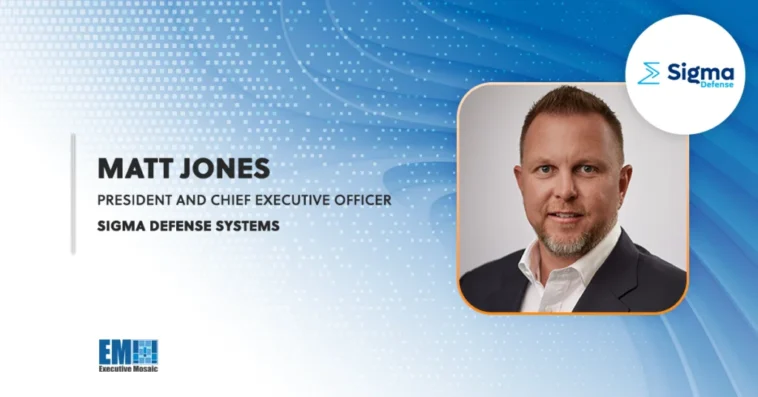Matt Jones, president and CEO of Sigma Defense Systems, explored two of the three major questions facing the U.S. military regarding its Combined Joint All-Domain Command and Control initiative.
In an article published Tuesday in Government Technology Insider, Jones first discussed the role of the sensor fusion concept and the use of artificial intelligence and machine learning at the edge in generating actionable insights from data to support warfighters on the battlefield.
“Leveraging edge computing and AI/ML, the military could create a scenario where intelligence from multiple, disparate sensors is generated and immediately analyzed by software at the tactical edge where it can then be shared directly with the warfighter,” he said.
“AI/ML wouldn’t necessarily make autonomous decisions, but rather aggregate data from all sensors, sift through it rapidly for the most important intelligence, and then make recommendations to the warfighter based on that data,” Jones added.
The Sigma Defense chief executive highlighted the importance of innovation to enable sensor fusion, AI, ML, edge computing and other technologies to thrive in the operational environment.
Another CJADC2-related question Jones discussed in the article is the importance of keeping applications and other technologies connected on the battlefield.
He cited the U.S. military’s need for resilient, redundant networks that could deliver connectivity in the event that network components are denied or degraded.
“But just having redundant and resilient networks isn’t enough – especially if data can’t flow between disparate networks and different systems. This is why software and IT modernization is needed to open systems up, and middleware that allows systems to talk needs to be developed,” Jones stated.
“Finally, the military has to operate under the assumption that networks will either be denied or degraded. This means they need to put things in place at the edge that allow soldiers to ‘sense, make-sense, and act’ even when comms go down,” he added.





